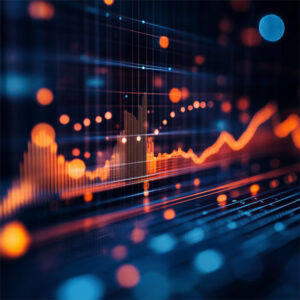 When it is claimed that the “real victims” are white, male, straight or Christian, there is the obvious problem of explaining how this occurs. It cannot be that white, male, straight and Christian people are systematically excluded from power in the United States. These are the people who currently dominate the White House, the Senate, the House, corporations, academia, and so on. But there is a feeling among some white, straight, male, and Christian people that they are suffering. But what is the explanation?
When it is claimed that the “real victims” are white, male, straight or Christian, there is the obvious problem of explaining how this occurs. It cannot be that white, male, straight and Christian people are systematically excluded from power in the United States. These are the people who currently dominate the White House, the Senate, the House, corporations, academia, and so on. But there is a feeling among some white, straight, male, and Christian people that they are suffering. But what is the explanation?
A “left wing” explanation would be that while being white, male, straight or Christian yields relative advantages, the greatest advantages are held by those who have the greatest wealth and power. That is, class is a dominant factor in the United States. Take, for example, the claim that migrants are stealing jobs. Put this way, white workers are claimed to be victims of minorities. While there are cases in which jobs are lost to migrants, the job woes of Americans are not caused by migrants stealing jobs. While the causes of job losses and underemployment are complicated, a major factor is that those with the power to make decisions choose to do things that hurt American workers. As a specific example, my hometown of Old Town used to have the paper mill as its primary employer. Migrants did not come to Old Town to steal the jobs, ownership of the mill changed and eventually those in charge decided to shut the mill down. This hurt my hometown in ways that it will probably never recover from. One could spend endless hours going through similar explanations of the real woes faced by white, male, straight, and Christian Americans. But this sort of explanation is obviously not going to be presented by those who hold power. But they still need to explain the suffering.
One “non-left” explanation is that the “real victims” are “losing” to the other groups because they are inferior. To use an analogy, back in the day my friends and I did well in the local road races; we were the ruling class of local running. This is no longer the case. The explanation is easy: we are now decades older and are inferior to the young athletes who now rule. One could argue that the same sort of thing is happening to the groups in question: they once ruled America but are now losing to superior groups because they are inferior. But this explanation would clearly be unacceptable to the conservatives who claim that white, straight, male, Christians are the real victims.
One reason for this is the conservative notion of merit and their claims about pulling oneself up by the bootstraps. If these groups are “losing” because they are inferior, then this would be acceptable under a professed principle of merit in conservative ideology. But conservatives do not say that it is morally fine that white, straight, Christian men are losing because they are inferior to their competition.
A second reason conservatives will not accept the inferiority explanation is that it would not be good propaganda or rhetoric. Telling these groups that they are losing because they are inferior will hardly yield the desired results. As such, an explanation is still wanting.
But conservatives do tend to present the “opponents” of these groups as being strong in some manner. This allows the “defeat” to be blamed on the strength of the opposing groups rather than on the weakness of the “real victims.” An obvious problem is that if these opposing groups are presented as strong, this entails their white, straight, male, Christian “victims” are weaker and thus, by conservative ideology, inferior. This creates a challenge for conservatives: the “real victims” must be victims, but they must also be mighty. That is, they must be mighty victims. The reasons given that the groups are mighty(yet victims) vary considerably and fall along a vast spectrum.
In the case of being white, the notion of whites being mighty can range from pride in being white to white supremacy. Moderate examples of this would be people to argue for the superiority of Western (white) culture and point to the accomplishments of white people. Approaching the extreme end would be assertions of fundamental white supremacy and the inferiority of all others. Nazis would be in this area. I must, of course, state the obvious to pre-empt a likely attack: being fine with being white is fine. I’m fine with looking white; but I do not think I am thus superior to others.
In the case of being male, the notion that men are superior to women can range from pride in being a male to complete misogyny. Moderate examples would be those who argue that men and women have different qualities, but men are generally better. Near the extreme end would be full misogyny, the idea that men are vastly superior to women and women are horrible and out to destroy men. One can be fine with being a man; that can be healthy. I am fine with being a man; but I do not think this makes me superior.
In the case of being straight, the notion that being straight is superior to having another sexuality can range from the idea that being straight is more natural to the notion that non-straight people are abominations that should be destroyed. Moderate examples would be those who say that being straight is generally better than not being straight and non-straight people probably have some minor mental illness. The extreme end would involve regarding those other than straight people as perverted abominations that should be cured, locked away or even killed. One can be fine with being straight. I am. But I do not think that other orientations must be perverted or inferior. I do, of course, recognize that there can be evil connected to one’s sexuality. After all, pedophiles and rapists are morally wicked.
In the case of Christianity, the idea that it is better than other religions can range from the notion that it is somewhat better to the view that other faiths are not only inferior but wicked. Moderate examples would be people who think their faith is better because of Christ, but who think that other monotheistic faiths are close to being right (if only they would accept Jesus). Extreme examples would include fanatical loathing and hatred of other faiths, regarding those people as not only wrong but monstrous in their beliefs. This is not to deny that some people are monstrous in their beliefs. Christians should obviously be fine with being Christian—I am fine with my Episcopalian background. But I do not think I am thus superior to others. Once it has been “argued” that these groups are superior, then an explanation must be given as to why they are the “real victims.”
As noted above, the opposing groups that make whites, men, straight people, and Christians into the “real victims” must be strong enough to “win” yet also somehow inferior. These requires that the opposing groups have the traits needed to “win” while also having traits that make them inferior. The “real victim” groups must have the traits needed to “lose” while also having the traits that make them superior. This seems to create the paradox of the mighty victims: the inferior victimizers must win consistently to explain why these superior groups are the “real victims”, but the “victory” must also be unearned.
One way to try to do this is by a sports analogy in which the allegedly best athletes are consistently bested by allegedly inferior athletes. Inferior athletes could win by cheating or through some conspiracy, thus the inferiors consistently and unfairly best their betters. This would, of course, require that the best athletes can never overcome cheating or do anything to prevent it. That is, they are powerless to be anything but mighty victims. But this would seem to require that although they are the best athletes, they are lacking in other ways that allow them to be so easily bested. For this analogy to work with the groups in question, it would need to be shown that these groups are cheating in some manner that cannot be addressed by the alleged superiority of the “real victims.” It is not clear how this would work: that the “real victims” would be superior yet still unable to overcome the cheating of their alleged inferiors.
A second way is to use the ally hypothesis. The allegedly inferior victimizing groups are aided and abetted by traitors in the victimized groups. On this narrative, the traitors can best their betrayed fellows because they are also among the superior groups and aid the allegedly inferior groups to best their own kind. For example, one might allege that there are white traitors helping to victimize their fellow whites. Ironically, this would require that the traitors be superior to the loyalists, otherwise the group loyalists should be able to “win.” So, if whites being the real victims is explained in terms of white traitors, the problem is that this would seem to entail that the “best” whites are the traitors since they are “beating” the “lesser” whites. So, the ally hypothesis falls apart under examination.
A third way is to use the numbers hypothesis; the allegedly inferior victimizing groups have superior numbers, so the mighty victims are “losing.” While it is true that numbers can offset ability, the “real victim” groups are generally not outnumbered. Men and women are roughly equal in numbers, straight people vastly outnumber other orientations, Christians dominate American religion, and white people still have a numerical advantage in America, though we might now be a majority minority (that is, not 50+% of the population but still more than any other group). As such, the numbers argument fails. But there is an explanation that does reconcile the fact that these groups are both “superior” and victims.
It is true that white people, men, straight people, and Christians are victims. But it is also true that people from these groups hold the overwhelming power in the United States. Thus, these groups both hold superior power and contain victims. The victims are, ironically, most often victims of their fellows who hold superior power. So how do the powerful few convince the many in these groups that they are the “real victims” of the out groups?
A main strategy seems to involve pointing to losses in relative advantages between groups and convincing people that these losses are both unfair and caused by the other group. For example, men have lost some of their relative advantages over women in both the law and social norms and nothing stings like losing an undeserved advantage. It seems natural to blame women for this, since they have gained from these changes. As another example, whites have lost some relative advantages over the years. To use an extreme example, it is no longer legal to own a black person. It is natural to blame people who are not white for the changes. Straight people have also seen same-sex marriage legalized, which some people somehow see as a loss. It is natural to blame people with other orientations for this. Christianity has had to share more space with other religions and this loss of advantage no doubt strikes some as being victimized. It is natural to blame people of other faiths for this, since they have gained something.
Another strategy involves getting people in these mighty victim groups to believe (or at least feel) that most of their woes are the fault of the other groups, even when there is no connection. For example, the poverty and underemployment that white, straight, Christian men face is blamed on minorities although the economic decisions in the United States are mostly made by a few white, straight, Christian men. Men who are concerned that men die disproportionately in dangerous jobs might blame the feminists but it is obviously not the feminist who exclude women from dangerous jobs, and it is certainly not the feminists who control working conditions or when we take military action. There are also cases in which the harms are entirely fictional, for example Fox’s eternal make-believe war on Christmas.
We thus have a working explanation of mighty victims. A tiny fraction of the members of the group are mighty in that they hold overwhelming power. The other members of these groups are victims, but they are mostly victimized by members of their own groups. Which makes sense: the idea that those with less power are somehow victimizing the powerful is as absurd as the idea that the poor are victimizing the rich.
 It might seem like woke madness to claim that medical devices can be biased. Are there white supremacist stethoscopes? Misogynistic MRI machines? Extremely racist X-Ray machines? Obviously not, medical devices do not have beliefs or ideologies (yet). But they can still be biased in their accuracy and effectiveness.
It might seem like woke madness to claim that medical devices can be biased. Are there white supremacist stethoscopes? Misogynistic MRI machines? Extremely racist X-Ray machines? Obviously not, medical devices do not have beliefs or ideologies (yet). But they can still be biased in their accuracy and effectiveness.
 A few years ago, PragerU tried to push back on Twitter (now X) against arguments by young Americans about racism. In general, getting involved in social media battles is a bad idea. To use an AD&D analogy, these fights are like punching green slime: the more you attack, the more you hurt yourself. And you end up covered in slime. It is usually best to avoid rather than engage.
A few years ago, PragerU tried to push back on Twitter (now X) against arguments by young Americans about racism. In general, getting involved in social media battles is a bad idea. To use an AD&D analogy, these fights are like punching green slime: the more you attack, the more you hurt yourself. And you end up covered in slime. It is usually best to avoid rather than engage.  In the context of the war on “cancel culture” Republicans professes devotion to the First Amendment, freedom of expression and the marketplace of ideas. As noted in earlier essays, they generally frame such battles in disingenuous ways or lie. For example, Republicans raged against the alleged cancellation of Dr. Seuss, but the truth is Dr. Seuss’ estate decided to stop selling six books. As another example, Republicans went into a frenzy when Hasbro renamed their Mr. Potato Head product line to “Potato Head” while keeping Mr. and Mrs. Potato Head. In these cases, the companies were not forced to do anything, and these seemed to be marketing decisions based on changing consumer tastes and values.
In the context of the war on “cancel culture” Republicans professes devotion to the First Amendment, freedom of expression and the marketplace of ideas. As noted in earlier essays, they generally frame such battles in disingenuous ways or lie. For example, Republicans raged against the alleged cancellation of Dr. Seuss, but the truth is Dr. Seuss’ estate decided to stop selling six books. As another example, Republicans went into a frenzy when Hasbro renamed their Mr. Potato Head product line to “Potato Head” while keeping Mr. and Mrs. Potato Head. In these cases, the companies were not forced to do anything, and these seemed to be marketing decisions based on changing consumer tastes and values. In epistemology, the problem of other minds is the challenge of proving that other beings have thoughts and feelings analogous to my own. A practical version of the problem is how to tell when someone is honest: how do I know their words match what they believe? But the version I am concerned with here is the problem of racist minds. That is, how do I know when someone is a racist? Racism, like dishonesty, comes in degrees. Just as everyone is a bit dishonest, everyone is a bit racist. But a person should not be labeled a liar unless they are significantly dishonest. The same applies to being a racist and a person should not be labeled as a racist unless their racism is significant. There is, of course, no exact boundary line defining when a person should be considered a liar or a racist. Fortunately, we can get by with imprecise standards and accept the existence of grey areas. To demand a precise line would, of course, fall for the line drawing fallacy.
In epistemology, the problem of other minds is the challenge of proving that other beings have thoughts and feelings analogous to my own. A practical version of the problem is how to tell when someone is honest: how do I know their words match what they believe? But the version I am concerned with here is the problem of racist minds. That is, how do I know when someone is a racist? Racism, like dishonesty, comes in degrees. Just as everyone is a bit dishonest, everyone is a bit racist. But a person should not be labeled a liar unless they are significantly dishonest. The same applies to being a racist and a person should not be labeled as a racist unless their racism is significant. There is, of course, no exact boundary line defining when a person should be considered a liar or a racist. Fortunately, we can get by with imprecise standards and accept the existence of grey areas. To demand a precise line would, of course, fall for the line drawing fallacy. Transgender people, especially transgender athletes are now among the favored targets of the right. Pretending to be concerned about fairness for women, Republican lawmakers have been busy passing laws banning transgender athletes from competition.
Transgender people, especially transgender athletes are now among the favored targets of the right. Pretending to be concerned about fairness for women, Republican lawmakers have been busy passing laws banning transgender athletes from competition. A few years ago, the estate of Dr. Seuss decided to pull six books from publication because the works include
A few years ago, the estate of Dr. Seuss decided to pull six books from publication because the works include  Power holders in the United States tend to be
Power holders in the United States tend to be  When it is claimed that the “real victims” are white, male, straight or Christian, there is the obvious problem of explaining how this occurs. It cannot be that white, male, straight and Christian people are systematically excluded from power in the United States. These are the people who currently dominate the White House, the Senate, the House, corporations, academia, and so on. But there is a feeling among some white, straight, male, and Christian people that they are suffering. But what is the explanation?
When it is claimed that the “real victims” are white, male, straight or Christian, there is the obvious problem of explaining how this occurs. It cannot be that white, male, straight and Christian people are systematically excluded from power in the United States. These are the people who currently dominate the White House, the Senate, the House, corporations, academia, and so on. But there is a feeling among some white, straight, male, and Christian people that they are suffering. But what is the explanation? In my last essay I noted that those who have power in the United States tend to be
In my last essay I noted that those who have power in the United States tend to be  The people who have power in the United States tend to be
The people who have power in the United States tend to be